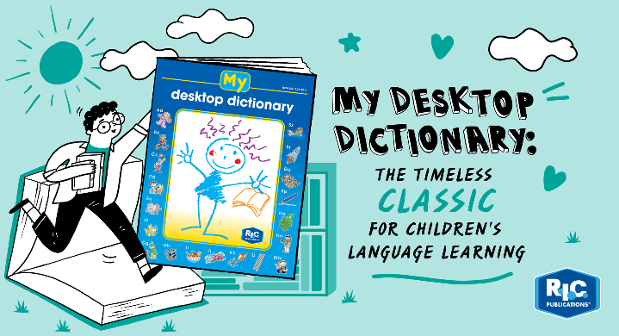- Tuesday 06 June 2023
- 0 Comments
In our previous blog, How We Can Support Our Learners Through the Reading Crisis, we focused on the reading crisis in South Africa. Since then, the 2021 PIRLS report was released and South Africa ended up in last place, once again, with a staggering 81% of our Grade 4 learners not being able to read with comprehension.
In a recent informal research study, we asked 99 Grade 7 English HL and FAL educators if they have ever been equipped with the necessary skills to teach someone how to read with comprehension.
Out of the 99 participants, 14 felt that they were not equipped to teach reading with comprehension at all, whilst 50 participants felt that they were not adequately equipped to do so. Therefore, 71% of the educators we surveyed felt that they were not fully equipped to teach reading comprehension.
So, if 71% of our educators do not feel equipped to teach reading comprehension and this skill has been singled out as one that our learners are lacking, it is fair to assume that the comprehension strategies are not being taught thoroughly, or at all, in our classrooms.
What Are ‘Comprehension Strategies’ and Why Are They Important?
The act of reading has no value at all if the reader cannot understand what it is they are reading. A child reading with comprehension will find meaning in the text and will be able to apply what they’ve read. A good reader makes use of various strategies to achieve this, including predicting, visualising, making connections, questioning, clarifying, summarising, determining importance, inferring, and synthesising.
If you are one of the educators who feel as though they are not adequately equipped to teach reading comprehension, we’ve got you covered. In this blog, we will focus on five simple and interesting ways to incorporate comprehension strategies in your classroom.
So, what are these strategies?
1. Predicting is Your Friend
What will the weather be like tomorrow? What will happen if I give the whole class detention? How will you feel if you win the match this afternoon? How will you feel if you lose?
Making predictions while reading is one of the most important comprehension skills, because it not only links the text to your own experiences, but it also allows you to create your own expectation of what is going to happen in the text. Predicting can, and should, be applied throughout the whole reading process.
Create a daily poll in your classroom where the learners predict a logical outcome on a current event, either at school or in the world. Start with something simple, such as a weather prediction for the following day. Guide the learners to look at the clues at hand. What season is it? What is the weather like today? Has anyone seen or heard a prediction from a weather app? The learners can then log their predictions and check which were correct the following day.
Other examples of daily poll topics include:
- Which team will score the most goals in this afternoon’s match?
- How long will the principal’s speech be during assembly?
- What will happen in the next chapter of the class reader?
2. Welcome Wacky Ideas
Encourage learners to think outside the box and make inferences using clues in the text. Show them pictures from magazines or textbooks and ask them to work in teams to brainstorm wacky backstories based on the clues in the picture. If the idea seems plausible in any way, the team gets a point.
I know it can be difficult to mark work that doesn’t have a clear, set answer guide. However, we need to teach our learners to form their own opinions and predictions, and we—as educators—need to be able to accept a variety of logical answers to one question. When marking inferencing in workbooks and assessments, if an answer is plausible, it should be accepted as correct.
3. Sharing is Caring
A well-known way to check if you understand something is to explain it to someone else. Reading with understanding is not that different. If a reader has to retell what they’ve read to someone else, they are not only checking that they understood what they’ve read, they are also getting some great practice at summarising the content. The next time your learners have to read a text in class, ask them to take turns in retelling the story to a classmate.
4. Apply Your Listening Skills to Your Reading
Ask the learners to imagine that they are having a conversation with the writer while they are reading a text. What might the method to this madness be, you ask? Well, when talking to someone, people use a variety of social cues and hints to suggest whether or not they understand. Whether it is simply nodding, or a hmm here and a uh-huh there, there are many ways we engage with the speaker. Similarly, if you don’t understand what someone is saying, you can stop and ask them to clarify or explain.
Although we don’t have the writer with us to explain what they meant while we are reading their text, we can use these same clarifying strategies as we read along. If the learners encounter a word that they don’t understand, instead of asking the writer what it means, they should look it up or use contextual clues to see if they can derive the meaning of the word for themselves. They should continually be hmm-ing and uh-huh-ing in their heads to verify their understanding or, if anything is unclear, find ways to clarify the content.
5. Switch it Up
Another way we can engage learners in thinking more deeply about the texts they read, is to let them set their own questions. To do this, they will need to implement predicting, making connections, questioning, clarifying, determining importance, inferring, and synthesising strategies. This will engage learners with the text on a deeper level.
You can make it even more interesting by only allowing questions with answers that are not directly written in the text. By regularly practicing the skill of setting questions, the learners will become more comfortable with reading between the lines and making inferences. Discuss their ideas in the classroom and select the most appropriate questions for everyone to answer in their workbooks.
Teaching the comprehension strategies is no simple task and requires practice and preparation. Rome was not built in a day, but you can start laying the foundations by adding comprehension strategy activities to your daily classroom routine.
Looking for further support? Check out the engaging resources in The Comprehension Strategies Box series. We built this series to help guide educators in reading comprehension lessons and encourage learners to develop a love of reading! Shop the range or download our free sample of The Comprehension Strategies Box today.
Renera
Educator and Trainer



